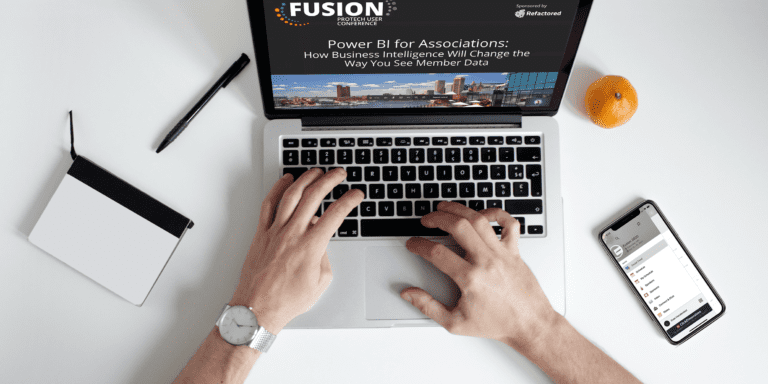
By Heather Hughes, Marketing Communications Specialist
After shifting away from an in-person customer celebration at the Four Seasons in Baltimore due to the COVID-19 pandemic, Protech Associates’ Fusion 2020 Customer Conference surpassed all previous attendance numbers for the event. This blog post is the first in a series that will discuss the various aspects of successfully managing a virtual event.
In a moment of crisis, innovation accelerates. And based on the number of articles you’ve probably read over the last few months focused on virtual events and software (check here, here and oh, also here), we thought it would be helpful to share how we transformed our customer event into a virtual Fusion 2020, Protech’s User Conference. But before we dig into the technology and other elements of our conference, we wanted to cover one a critical step in transitioning to a virtual event: communication.
Association marketers and meeting planners will tell you a successful event, either in-person or virtual, requires a thorough communications plan that includes procedure protocols, tangible parameters for success and detailed marketing action-items for their members, exhibitors and sponsors. But there’s one aspect of event preparation you must not forget: keeping your staff in the loop.
So, let’s break it down further.
What Should be Included in Your Staff Communications Plan?
Once your leadership team has decided to go virtual, there’s one group of people that must be looped in immediately: your staff.
Just like you would in any event, you’ll want to share a calendar with your staff to highlight the important dates and announcements. This can include the initial event re-launch, social media promotions, newsletter emails and new product and service announcements. Have weekly meetings with management to provide a list of action steps they can delegate further with their departments.
How to Communicate with Different Stakeholders
Each member of your community consumes, evaluates and understands information in different ways and at different times. Here’s what we considered while reshaping our event.
Staff
This can be broken down further by department. In your weekly event team meetings, highlight the announcements that are pertinent to the entire association, then follow-up on the specifics. Social media posts with marketing, product updates with customer service, software platforms with IT, so on and so forth.
A valuable lesson we learned during Fusion 2020 is that marketing & events and IT worked closely together, so it may be helpful to have an additional weekly meeting between these two departments to make sure your virtual conference runs smoothly.
Members
The same approach taken with your staff can be applied to your members. Your professional or trade association might have membership tiers that require unique conversations that apply only to their specific tier.
Reach out to those members with information on session announcements and product updates.
Sponsors
After your staff has been notified, check in with your sponsors or exhibitors. Before informing the sponsors, make sure you have considered how to continue offering them value for their agreements with your association. Hold conference calls with individual sponsors to help talk them through specific agenda items. Also, take into consideration that many of them might be swamped with new customer projects.
Public
Update your websites and social media regularly and encourage ongoing communications.
Press releases should be used solely for major announcements – hosting a hybrid event, technologies being used, new product updates, keynote speaker highlights, popular presentations, attendee/registration milestones.
Rethinking Your Communications Plan for a Virtual Event
Your communication channels are ever-growing. Gone are the days when mere phone calls and email sequences were available to reach out to prospects. You can promote events on your home page and develop an “attendee-only” website as your home base, or engage with your members on secure community platforms, mobile apps or social media.
Regardless of the communication channels you use, a major lesson that we took away from Protech’s first-ever virtual Fusion 2020 is that the chain of communication begins and ends with your staff. Outlining how the information is communicated throughout your organization – from your executive management team to your college interns – is not only something we encourage, but something we view as necessary in a time when plans can change at any moment.
Fortunately for us, we were able to track ongoing event changes, as well as our state’s stay-at-home guidelines, and quickly inform staff before the other stakeholders. Despite the sudden shift to a virtual format, we successfully promoted the event and generated record attendance.
Want to know more on our virtual event success? Download our webinar Lessons Learned: How We Took Our Event Virtual in 5 Weeks

